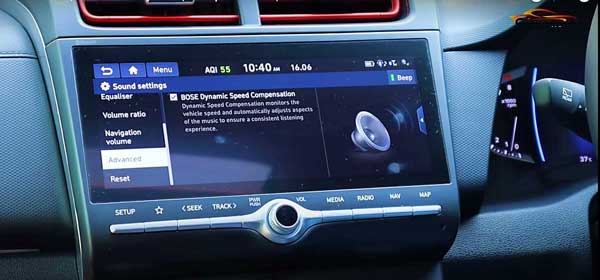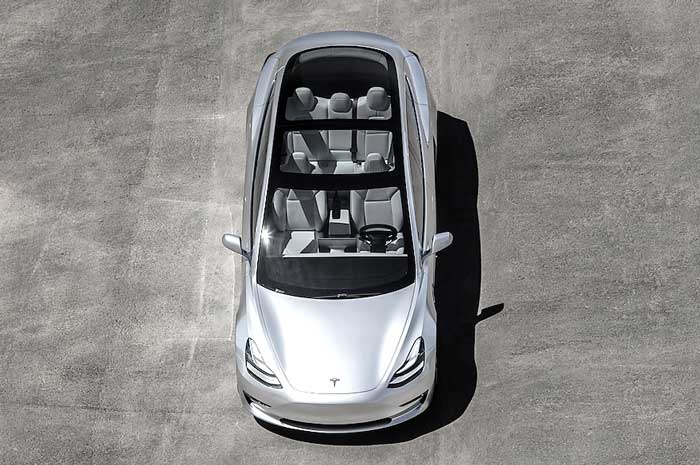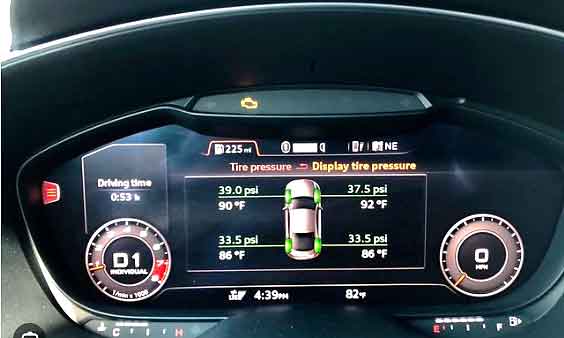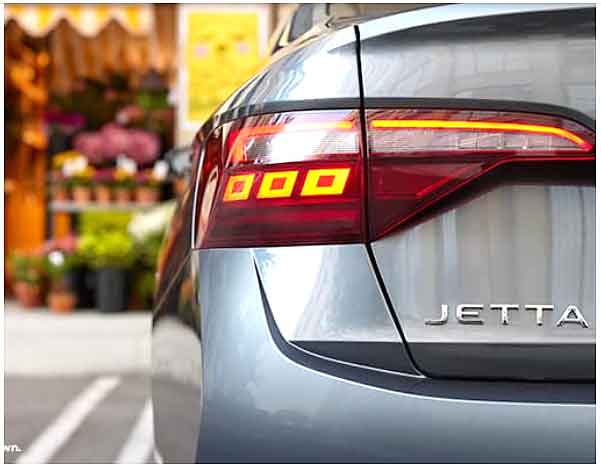Exploring the Factors Behind the Affordability of Mazda Cars
Why are Mazdas often seen as expensive, despite their reputation for high quality? Mazda’s ability to strike this balance stems from several key factors that enable it to offer an affordable yet reliable car.
First, efficiency and flexibility contribute significantly to cost reduction. Additionally, Mazda has focused on technology-sharing partnerships in a positive manner, reducing R&D costs and implementing innovations from collaboration, and their logical approach to marketing and avoiding aesthetic surplus does the brand helps keep prices competitive.
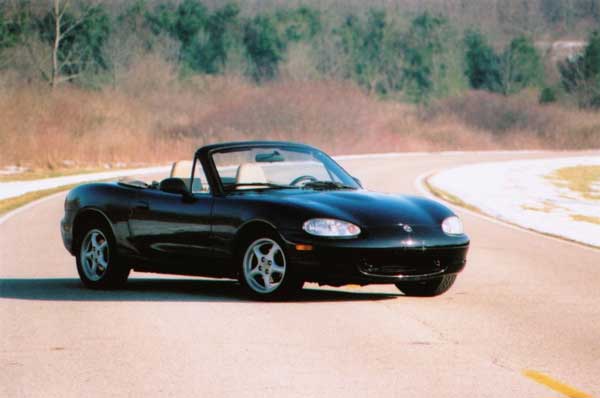
Photo: Miata passenger side angle shot in park
Another factor is their commitment to using existing platforms across multiple models, improving product quality, and reducing overall production costs. Additionally, Mazda’s commitment to innovative, reliable, and fuel-efficient engines helps to lower the cost of ownership, making them more affordable.
This combination of strategies allows Mazda to offer well-built vehicles at reasonable prices without compromising quality, thus distinguishing itself in the market without compromising on quality.
Efficient Production and Cost Management
Mazda stands out for its commitment to product quality, carefully crafted to control production costs. The company strategically simplifies manufacturing processes and supply chains, enabling the production of affordable vehicles while supporting the best automotive standards.
By employing simple manufacturing techniques, Mazda achieves a delicate balance: delivering a quality car, while maintaining price competitiveness. This commitment to excellence not only results in high-quality product delivery but also facilitates affordable vehicles that compete with those in the market or exceeds consumption.
By continuously refining its manufacturing processes, Mazda has cemented its position as a company that offers not only quality vehicles but also value for money, a testament to its demand for performance technically efficient, and stable cost-effectiveness.
Optimized Efficiency in the Changing Environment
Mazda Digital Innovation (MDI) has revolutionized vehicle development and manufacturing with the use of advanced 3D technology. It reduces development time from an average of 18 months to 14 months, sometimes even shorter for some models, by ensuring designers virtual part compatibility and assembly feasibility before making actual Components such as durability, crash safety, handling, engine, and transmission in virtual tests, and more. including different parts. In these tests, the number of prototype vehicles was reduced by 30% and the testing time by 50%.
Mazda used a Product Information Management (PIM) system to accelerate concurrent manufacturing, digitize development data and partner with Ford Group and global suppliers to facilitate availability of the Mazda Full- The Service Supplier (FSS) system incorporates suppliers into the leading edge of development, simplifies roles and responsibilities. As of March, about 200 suppliers were FSS certified.
The launch of the “Mazda Supplier Network (MSN)” strengthened contacts with 350 suppliers, planned to collaborate with the Japanese Vehicle Network Exchange for more convenient purchasing Mazda’s commitment to supply has improved Long-term quality improvement programs since 1998, strengthening infrastructure, increasing the quality of programs and more.
Focus on Engineering and Innovation
Mazda has a reputation for innovation by blending its luxury models into its lineup. Their commitment to excellence and advanced technology sets them apart in the automotive industry. Mazda also prioritizes heavy investment in research and development to offer cost-effective alternatives. This commitment is aimed at improving critical aspects of vehicle performance, safety improvements and fuel efficiency.
Their relentless demand for new products allows Mazda to produce vehicles with reliable technological advancements without compromising on price. This strategy allows it to be competitive, offers incredible features, and offers relatively low costs compared to some competitors While innovation is prioritized in addition to cost efficiency, Mazda consistently delivers appealing vehicles to a wide range of customers who demand quality and innovation in their driving experience.
Economies of Scale
Mazda, as a small car manufacturer compared to its competitors, changed its manufacturing processes significantly to optimize its SKYACTIV system, complex vehicles To achieve this it launched the Monotsukuri innovation system , offered continuously appealing products, adapting production to market demand and focusing on sustainable wellness.
The strategy included reducing the trade-off between features and generalities in the manufacturing process, adopting a stacked product design, common construction, and manufacturing flexibility Mazda provided and automotive parts were simplified in all models by rearranging common construction and manufacturing processes. For example, it has a standardized car body design based on a common design foundation, enabling economies of scale even when multiple models are produced.
Additionally, Mazda has implemented flexible manufacturing techniques such as multi-drive mechanisms in engine design. This reduced the machining length from 45 feet to four feet, ensuring that it was suitable for a variety of engines on the same assembly line.
This product flexibility allowed Mazda to quickly respond to market changes without compromising quality or incurring additional costs. The company has developed a mix of products, which allows for relentless diversification. As a result, this restructuring significantly reduced the investment in engine machine capacity at the Hiroshima plant by 70%, facilitating faster responses to market demand and providing economies of scale for Mazda’s limited production lines improved.
Overall, the Mazda Monotsukuri innovation aims to strike a balance between scale and flexibility, in line with a sustainable 2% global market share followed by the company’s trends, putting profits ahead of than strong development.
Strategic Positioning in the Market
Mazda is committed to maintaining its positioning as little more than unpretentious, testing luxury rivals in the entry-level segment as consumer preferences shift to higher-end offerings Mazda’s focus on segments a non-luxury enhancement of luxury products rotates, enabling the brand to outperform its Japanese competitors and attract luxury car owners, reflected in trade-in from car manufacturers beauty of the CX-9.
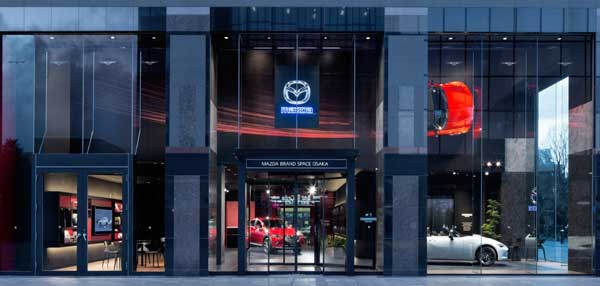
Photo: Mazda Brand Space Osaka Japan
Led by Mazda Australia boss Martin Benders, the company aims to compete with luxury brands in entry-level models rather than revive its Unos luxury brand Benders emphasizes Mazda’s strategy of delivering quality, style and appeal gives, propelling the brand’s image beyond its Japanese counterparts.
Despite the decline of luxury brands like Mercedes-Benz, Audi and BMW, Mazda believes it makes more business sense to move up. This approach has resulted in increased revenues across the Mazda portfolio, in contrast to luxury brands facing declining revenues due to their entry-level models.
Mazda’s strong presence in Australia, the second-best-selling brand with almost 10 per cent market share, cements its position as a strong competitor in a market it’s not willing to he will compete in a high-end luxury class like Mercedes or BMW.
Competitive Pricing Strategy
Mazda’s marketing strategy is mostly analyzed through the 4Ps framework (marketing, price, location, promotion). The product portfolio includes vehicles such as hatchbacks, sedans, crossovers, SUVs, including global brands such as the Mazda MX-5, Mazda2, Mazda3, etc. The pricing strategy is competitive and varies depending on competition Premium models like the CX-9 reflect higher pricing.
Their distribution strategy includes manufacturing in Japan and elsewhere around the world, using raw materials and assembly lines. They sell through global retailers. Promotions include a 360-degree approach: car shows featuring new models, sponsorships (e.g., Australia’s next top model), social media engagement (competitions). , video), TV ads for new product launches, magazine content, and CSR activities focusing on environment and safety , and social contributions.
Mazda’s marketing mix emphasizes leveraging different platforms from traditional media like TV and magazine to contemporary avenues like social media, auto expo, CSR initiatives etc. This comprehensive approach helps Mazda engage customers, build brand awareness and better communicate product offerings in markets around the world.
Brand Perception and Depreciation
When evaluating vehicles, Mazda may display a slightly higher price point compared to selected competitors. This feature affects resale value, making pre-owned Mazdas economically available to buyers. However, it is important to note that this declining trend does not mean that well-maintained vehicles are of lesser quality or reliability.
Mazdas’ slight price drop doesn’t directly compromise quality or reliability. It is important to consider a variety of factors that affect price fluctuations, such as market dynamics, consumer preferences, and perceived product value. Despite possible price drops, Mazdas can deliver commendable results and reliability, thanks to consistent maintenance and care.
Buyers exploring the pre-owned market can take advantage of these price drops to be able to get a well-maintained Mazda at a very attractive price. However, it is important to consider the condition, maintenance history and overall performance of the car to make an informed buying decision and get a reliable quality Mazda despite a slight drop in price.
Mazda significantly increased its resale value, earning a position in the top 5 for all seasons. While it lacks standout stars, Mazda’s lineup boasts consistent performance, especially led by the MX-5 and CX-3.
For the best value, choose a 2021 Mazda model, which offers 93% new value and 92% over its useful life. The 2020 and 2019 models also offer interesting pricing projections. Our ratings assess a variety of factors, including origination and current costs, maintenance costs, and predictable remaining years of depreciation. The top year of use indicates the best Mazda choice for value for money.
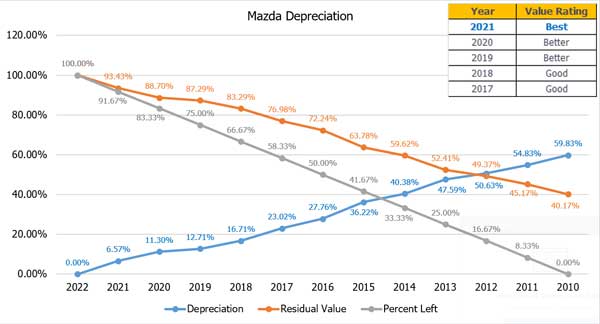
Figure: Mazda Depreciation Graph
Cost Savings in Marketing and Advertising
Mazda’s approach to marketing prioritizes focusing on product quality and technical prowess over glamorous advertising campaigns. Their strategy emphasizes the intrinsic value of their vehicles by focusing their vehicles on high quality and performance. Avoiding fancy marketing efforts, Mazda devotes a significant portion of its products to innovation, research and ongoing development This emphasis on in-vehicle improvements allows Mazda to set a competitive price, and it benefits customers by offering well-built vehicles at reasonable costs
Reduced spending on glamorous advertising campaigns allows Mazda to invest more in improving the quality of its vehicles, this commitment to product design focusing on technology interior improvements, safety features and design improvements so not only elevate Mazda’s reputation for reliability and performance but customers’ real value for their money It ensures you get vehicles that can deliver
As a result, Mazda’s distribution system prioritizes product quality, helping to create an attractive value proposition for their customers.
Focus on Customer Satisfaction
Mazda’s commitment to customer satisfaction remains a cornerstone of their business philosophy. This commitment is reflected in their customer loyalty program. This loyalty is enhanced by consistent delivery of reliable vehicles coupled with superior customer service.
This approach not only ensures existing customers remain satisfied, but also encourages repeat business. Satisfied Mazda customers tend to be brand advocates, willingly depending on the company’s products and services for their friends, family and extended network. This promotion plays an important role in maintaining Mazda’s sales numbers.
Moreover, the support of loyal customers enables Mazda to maintain a strong price in the market. Ultimately, this emphasis on customer satisfaction plays a key role in Mazda’s sustainable success by strengthening customer loyalty, improving sales and maintaining a strong market position on
To increase customer satisfaction, Mazda focuses on exceeding customer expectations with the Mazda brand experience.
- CSR goals for March 2021 include increasing employees’ awareness of consumer values through communication activities.
- Efforts include delivering Mazda’s social value directly to consumers and developing products in line with “Sustainable Zoom Zoom 2030.”
- Strategies involve building emotional connections with customers, emphasizing uniqueness, and offering lifelong relationships.
- Mazda meets customer needs by customizing vehicles and services, conducting women-led research, and providing vehicles for specialized needs.
- Initiatives include showroom concepts, online services, Mazda-sponsored events for driving pleasure, and official merchandise to connect customers
- Mazda ensures reliable customer service through prompt support, digital owner’s manuals, employee training, and global analytics to address market-specific issues.
- Communication includes sharing best practices across retail outlets, rewarding outstanding effort, and developing strong communication channels globally.
Mazda prioritizes customer satisfaction including employee expertise, product development, diverse customer needs, communication channels and continuous improvement.
Mazda’s Affordable Excellence
Mazda’s affordability comes from many different methods, a mixture of many key factors. First, the company uses efficient manufacturing processes and innovative technologies, enabling cost-effective manufacturing without compromising on quality. Using economies of scale, Mazda optimizes its resources to reduce production costs while maintaining high standards.
Strategic market positioning and competitive pricing strategies further contribute to affordability. Understanding customer needs and market trends, Mazda strategically positions its vehicles in the market, offering competitive pricing to the customer.
Furthermore, the brand’s unwavering commitment to customer satisfaction plays an important role. Mazda will deliver reliable vehicles with superior performance, ensuring customer loyalty through reliability and satisfaction.
Despite their high price tag, Mazda vehicles maintain a reputation for quality and innovation, setting a standard in the automotive industry. This unique blend of cost-effective practices, customer focus and unwavering quality reaffirms Mazda’s position as a leader in providing value-added, quality vehicles.

